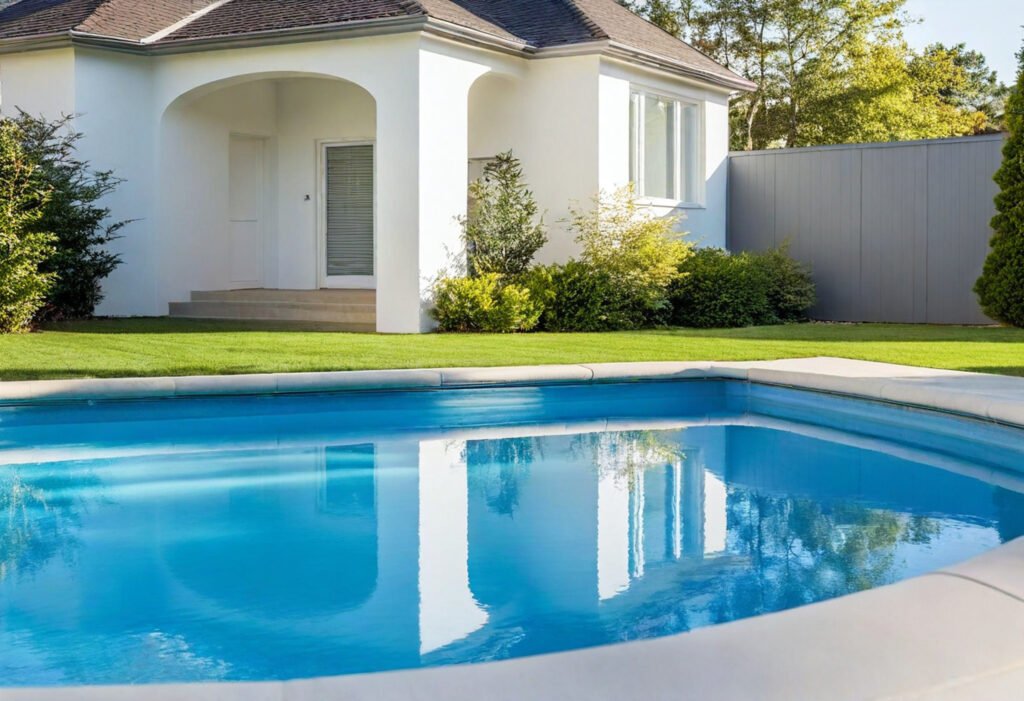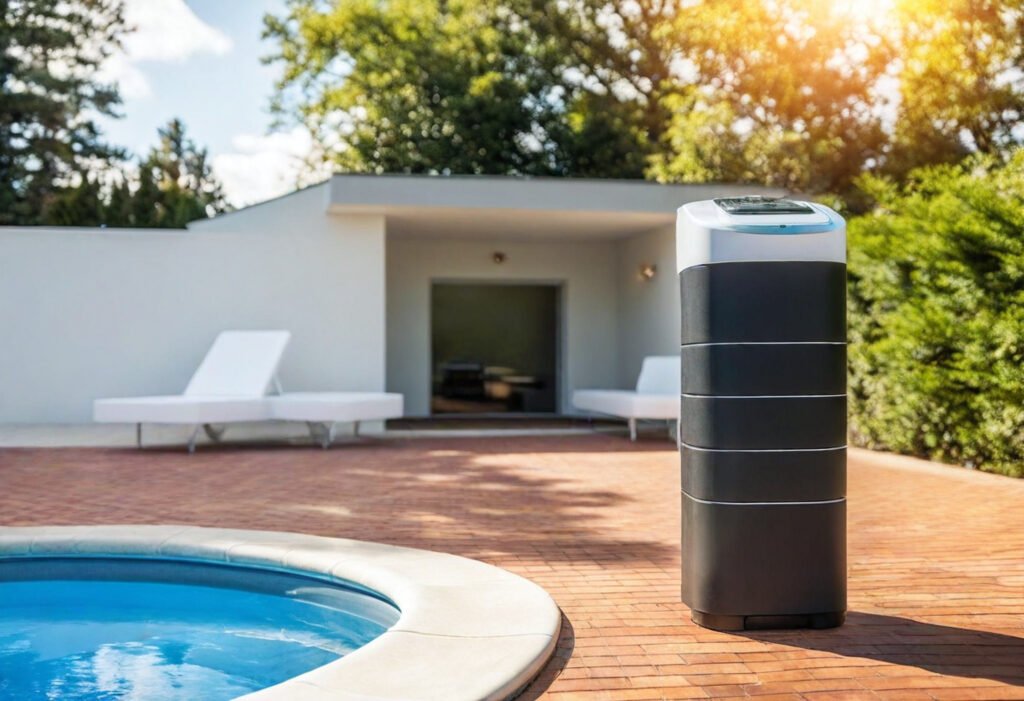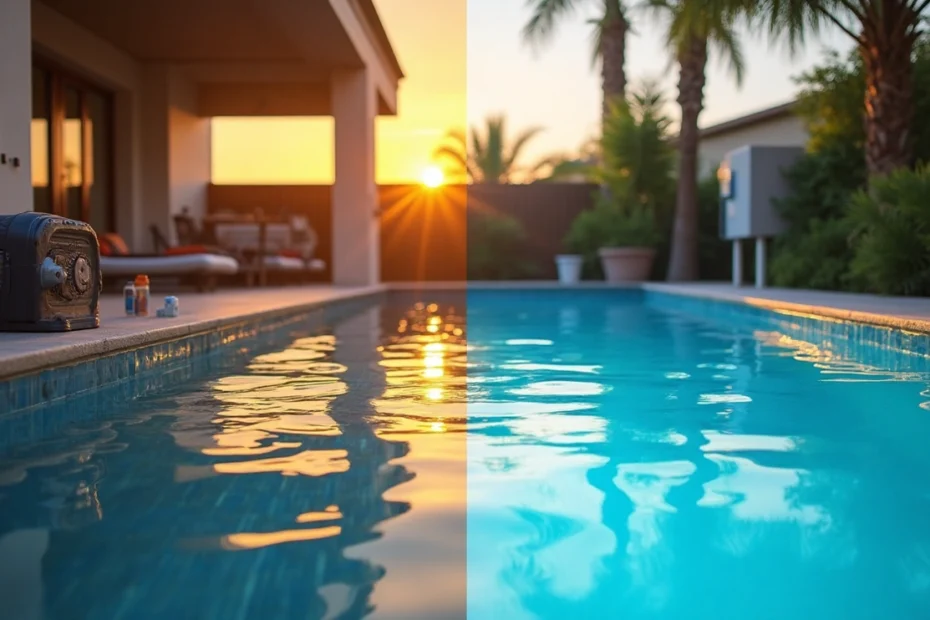Your wallet might be taking a hit from outdated pool technologies without you noticing. Research shows that a well-tuned pool automation system can cut energy use by up to 30%. Many pool owners still use inefficient equipment despite these savings. Some pool owners have reduced their energy costs by 30% just one year after installing a pool automation system.
We found that there was a way to control nearly every aspect of your pool remotely. This makes maintenance easier and more cost-effective by a lot. Pool control technology reduces expenses and makes ownership simple by automating filtering, heating, cleaning, and lighting tasks. Variable-speed pumps stand out as one of the most effective upgrades. These pumps use 80-90% less energy than traditional single-speed ones. In this piece, we’ll look at how outdated systems cost you money and how the right automated pool system can improve your pool experience while lowering your monthly bills.
Outdated Pool Equipment That Drains Your Wallet
Your pool equipment quietly adds to your utility bills every time you take a swim. The numbers show how old pool technology becomes a costly burden as time passes.
Single-speed pumps and their energy consumption
The single-speed pump stands out as the biggest energy waster in your backyard. Swimming pools make homes use 40-50% more electricity than those without. A standard 2000-watt pool pump runs at maximum power during operation and uses about 480 kWh monthly. You’ll pay $171-$240 yearly just to run the pump.
A recent study shows that pool pumps typically use between 3,000 to 5,000 kWh each year, which could add $500-$870 to your yearly power bills. The Department of Energy sees these problems as systemic, and their rules now require most new or replacement pumps to be variable speed.
Manual chemical dosing and overuse of chlorine
High power bills aren’t your only concern – outdated chemical systems waste money through poor efficiency. Manual chemical dosing results in guesswork. You either waste chemicals by using too much or risk water quality problems that cost extra to fix.
Modern automated chemical controllers use continuous electronic testing to measure exact chemical levels. This accuracy stops the waste that comes with manual dosing. Without these automated systems, you spend extra money on chemicals while risking damage to your pool equipment through chemical imbalances.
Old lighting systems and high electricity bills
Traditional incandescent pool lights waste energy. These old lights last only 1,000 hours and use substantially more power than newer options.
LED pool lights cut energy use by about 80%. A 45-watt LED matches the brightness of a 300-watt incandescent while saving around $114 per bulb yearly. LED lights also last 25,000 to 50,000 hours – up to 50 times longer than incandescent bulbs.
These old components steadily drain your wallet. Most pool owners don’t notice until they compare their costs with modern pool automation systems.
How Smart Pool Automation Systems Cut Hidden Costs

Smart pool automation provides hidden savings that can change pool ownership economics. These systems tackle problems that old-school pool management methods don’t deal with very well.
Automated scheduling reduces energy waste
Pool automation systems are great at optimizing equipment runtime. These systems can run during off-peak electricity hours and dramatically cut your utility bills. Hayward automation systems can save up to 70% of energy through better scheduling.
Variable-speed pumps with smart controllers give you the biggest chance to save energy. These pumps adjust flow rates based on actual needs instead of running at full power all the time. Smart pump management can cut energy costs by up to 90% compared to standard single or two-speed pumps.
Remote control prevents unnecessary usage
Maybe you’ve left pool equipment running too long – this common mistake drives up costs. Pool automation lets you control everything through mobile apps from anywhere, anytime. You’ll never waste energy again because pumps, heaters, and lights will run only when needed.
Pool automation systems let you customize settings for different seasons and occasions. You can create “winter” settings with less heating and filtration during quiet periods or “summer” profiles for busy times. These customized schedules help you match the system to your lifestyle and optimize energy use during peak and off-peak hours.
AI-based chemical monitoring saves on supplies
Old-school pool care wastes chemicals through guesswork dosing. Modern AI-driven systems check water quality every hour and send accurate readings to your smartphone. These precise monitoring systems can reduce chemical consumption by 30% or more.
Smart chemical dispensers handle pH and chlorine levels precisely. Instead of guessing, these systems:
- Add chemicals only when needed
- Dispense exact amounts based on up-to-the-minute water analysis
- Prevent wasteful overcorrections that get pricey
This precise approach to water chemistry cuts waste while making swimming safer. Some systems learn your pool’s unique traits over time and give increasingly accurate recommendations.
The Real Cost of Not Upgrading Your Pool Tech
Your pool technology needs regular upgrades, or you’ll end up spending more money each year. A single upgrade investment now saves you from throwing money away continuously.
Frequent repairs and part replacements
Old pool equipment breaks down more often, and repair costs never seem to end. Pool pump motor replacements can get pricey quickly – anywhere from $150 to $800. Heater repairs add another $160 to $730. The problems are systemic, and a complete pump replacement might set you back $700 to $1300. Pool leak detection services cost between $100 and $500. These leaks can lead to repairs that cost up to $3500 if you don’t deal with them right away. These costs pile up fast as your equipment gets older.
Higher utility bills over time
Old systems waste a lot of energy. A typical swimming pool adds $800 to $1200 to your yearly electric bill. Equipment that’s past its prime pushes these costs even higher. Single-speed pumps need about $450 yearly to run, while energy-efficient options cost nowhere near that, just under $200. This is a big deal as it means that over five years, you’re wasting at least $1250.
Increased maintenance labor or service fees
Old systems just need more attention beyond repairs and power costs. Professional pool maintenance runs $100 to $200 per visit, adding up to $1500-$1800 yearly. Outdated equipment needs extra chemical treatments and adjustments that can boost these costs by 30%. DIY maintenance takes several hours each week – time you could spend swimming instead of working on your pool.
Choosing the Right Automated Pool System for Savings

You’ll need to compare features, costs, and what you might save to pick the right pool automation system. A careful look at different technologies will show you which ones give you the best value for your money.
Compare top systems: Pentair vs. Hayward vs. Jandy
Pentair leads the market with a 35% market share. Their IntelliFlo pumps cut energy use by up to 90%. The company’s IntelliCenter system stands out because it saves energy through smart scheduling.
Hayward created OmniLogic with an easy-to-use interface that works with Amazon Alexa voice commands. Their automated systems can help you save up to 70% on energy.
Jandy holds 25% of the market. Their iAquaLink system can link up to 32 different pool features. The system boasts an impressive 8.2 energy efficiency rating.
What features save money?
Variable-speed pumps save you the most money by using up to 75% less electricity. Running your equipment during off-peak hours with automated scheduling cuts utility bills by a lot.
Smart chemical monitoring systems reduce chemical costs by 30-50% and keep water quality steady. The systems also include protective features like freeze protection and equipment interlocks that help avoid getting pricey repairs.
Installation costs vs. long-term ROI
The original investment runs from USD 500-700 for simple systems to USD 1500-3000 for detailed solutions. Professional installation usually costs between USD 2500 and USD 5000.
Most homeowners get their money back within 3-5 years, and energy savings hit 30% in just the first year. Mid-range options like Jandy iAquaLink or Pentair EasyTouch give you the best value by balancing features and cost.
Conclusion
Old pool technology quietly drains your wallet while modern automation provides a clear path to major savings. Old single-speed pumps, manual chemical dosing, and inefficient lighting systems add up to higher expenses each year. These outdated parts may work fine, but they create an ongoing financial burden through wasted energy and chemicals.
Smart pool automation systems are a great investment that goes beyond a basic upgrade. Variable-speed pumps can cut energy use by 80-90%, and AI-based chemical monitoring stops wasteful overdosing. On top of that, remote controls make sure the equipment runs only when needed.
The numbers show modernization makes financial sense. The original investment runs $2,500-$5,000 for complete solutions, but most homeowners get their money back within 3-5 years. Putting off these upgrades means you’ll keep paying higher utility bills, repair costs, and extra maintenance fees.
A simple question determines your choice: Would you rather invest once and get paid back or keep wasting money on old technology? Modern pool automation makes pool ownership easier and saves you money over time. Your backyard oasis should help you relax, not drain your bank account.
